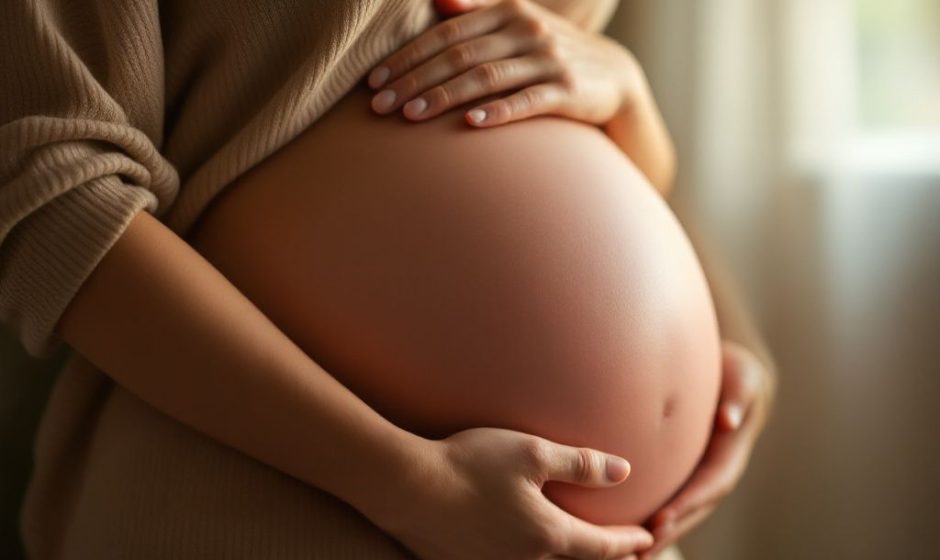Hey there, buddy. If you’re diving into the deep sea of pregnancy knowledge, you’re bound to come across the mysterious world of hormones. And trust me on this one, they’re like the unsung heroes keeping the backstage organized while everyone’s focused on the main event—your growing little one. Among these, the role of estrogen in pregnancy is quite a star player. But what exactly does it do, and how does it cozy up into the big picture of pregnancy? Let’s stroll through this fascinating journey, much like browsing through stories from a chatty friend.
Breaking Down the Basics
First things first, what is estrogen? It’s a hormone many folks have heard about, but until pregnancy enters the scene, it might not grab all the attention it deserves. Estrogen is primarily lauded for regulating the menstrual cycle, but its functions are way broader—sort of like a talented actor who can play both the lead and supporting roles throughout life’s series of episodes.
The Three Faces of Estrogen
Here’s a tidbit that may baffle or fascinate you: Estrogen isn’t a single hormone. There are actually three types—estradiol, estriol, and estrone. Together, they orchestrate bodily harmony, yet each has distinctive contributions, especially when it comes to pregnancy. Let’s break it down:
- Estradiol: The big cheese when it comes to reproductive years. It steers the menstrual cycle and supports a healthy pregnancy.
- Estriol: This one’s all about pregnancy. Kicks into gear mostly during pregnancy, with its levels increasing as the placenta develops.
- Estrone: More low-key, but it plays its part post-menopause, just hanging in the background during pregnancy.
Estrogens are like the chefs crafting the perfect dish (your pregnancy) with the right blend of ingredients.

The Role of Estrogen in Pregnancy
Estrogen isn’t just hanging out to look pretty. It’s doing critical work. It’s almost like the project manager who oversees every stage, ensuring everything is running smoothly. But for what exactly, you may ask?
Kickstarting the Pregnancy
Once pregnancy starts, estrogen springs into action. It’s responsible for preparing the uterus by thickening its lining, making it cozy and inviting for that fertilized egg. Think of it as rolling out the red carpet for the guest of honor—the embryo.
Supporting the Placenta
Here’s where things get quite interesting. Estrogen helps in forming the placenta. And the placenta? It’s like an all-in-one service center for your baby—providing nutrients, oxygen, and getting rid of waste.
Body Changes Galore
As pregnancy progresses, estrogen is dealing with changes you never even knew to expect. It stimulates breast growth in preparation for breastfeeding, encourages skin changes, and even impacts pelvic floor muscles to prepare for delivery. So if you’re noticing changes in your body and thinking, “Wasn’t this waistband looser last month?”, tipping your hat to estrogen wouldn’t be far-fetched.
Estrogen’s Symphony: Multitasking During Pregnancy
Let’s dig a tad deeper here. You know how people love a good multi-tasker? Estrogen could win awards in that category when it comes to pregnancy. It doesn’t just stick to its official ‘job description.’ Here’s a bit of what it’s juggling:

- Stimulating Hormonal Production: It nudges the production of another key hormone called progesterone, bonding crucially to maintain pregnancy.
- Affecting Mood and Emotions: That emotional roller coaster you might sometimes experience—highs, lows, in-betweens? Sure, some elements of it might stem from the ramped-up level of estrogens. Charming, isn’t it?
- Influencing Metabolism: Speedy metabolisms or surprising fatigue could be an estrogen-triggered part for some due to increased energy requirements for yourself and your tiny developing baby.
When Estrogen Levels Fluctuate
Admittedly, while we praise estrogen for its essential roles, fluctuating levels must be acknowledged. High or low estrogen levels can crop up during pregnancy. It’s sort of like a car running either too cold or too hot—bringing challenges to your driving experience.
High Estrogen Levels
High estrogen may arise due to conditions like larger placental volume or pregnancy with multiples (twins, triplets!). Symptoms? Oh, some could be bothersome—intensified nausea or breast tenderness. However, it’s usually a sign of a healthy pregnancy and a well-working placenta.
Low Estrogen Levels
On the flip side, low estrogen levels need attention. They could signal potential complications like fetal growth restrictions or preterm birth. If suspected, healthcare providers typically dig deeper to understand what’s cooking.
Managing the Estrogen Roller Coaster
Feel like you’ve been riding a roller coaster with deceptive loops and unexpected thrills? That’s the pregnancy hormone ride for you. But fret not, you’re more in control than you might feel.

Regular Checkups
Keeping up with regular doctor visits is your secret weapon. Monitoring estrogen and other hormone levels help nip potential issues in the bud, making adjustments when needed.
Communicate with Your Healthcare Team
From mood swings to physical changes, keeping open communication lines with your healthcare team eases many worries. The more information they have, the better personalized support and advice they can provide.
Healthy Lifestyle Choices
Eating healthy, staying active, and managing stress are paramount. Hints that your body’s masterfully balancing changes aren’t solve-alls but affect hormone production positively. So, embrace an extra stroll through the park or colorful plates at mealtime.
Conclusion: Embrace the Journey
Navigating the role of estrogen in pregnancy can feel like a dance—you’ll stumble, readjust, and flow. With estrogen conducting choir and symphony, anticipating a little chaos within harmony isn’t bad. You’re joining millions in this shared, timeless hall of wonders that brings new life into the world.
Remember, despite all technical insights, you’re living, laughing, and sometimes shrugging through everyday miracles. Each ebbs uniquely, adding small meanings through choices, stories, and moments. You’re community, history, future seed joiner, with altruism, love exemplifying human existence alongside lifetimes and experiences.
So just give this a go and trust the journey. Because while the role of estrogen in pregnancy weaves a technically stunning fabric rich with science and truth, it’s your intimate story, unfolding intuitively, that truly matters in the grand scheme of things.
Frequently Asked Questions
What are the benefits of using a hair mask in my hair care routine?
Using a hair mask can provide several benefits, including hydration, smoothing, strengthening, curl definition, heat protection, and damage repair. Hair masks infuse the hair with moisture, help coat the hair shaft to seal split ends, reduce breakage, and protect the hair from heat styling and environmental damage[1][4].
What ingredients should I look for in a hair mask?
Effective hair masks often include ingredients such as coconut oil, argan oil, shea butter, honey, avocado oil, green tea, and coconut water. These ingredients provide nourishment, moisturize, and protect the hair, offering benefits like softening, moisturizing, and protecting against damage[2][5].
How often should I use a hair mask in my routine?
You should use a hair mask whenever your hair feels dry, unmanageable, or in need of intense hydration. This can vary depending on your hair type and needs, but generally, using a hair mask once or twice a week can help maintain healthy and moisturized hair[1][4].
How do I apply a hair mask for the best results?
To apply a hair mask effectively, shampoo your hair first, then apply the mask, focusing especially on the ends where hair tends to be the most damaged. Leave the mask on for anywhere from 10 minutes to overnight, depending on the type of mask and your hair’s needs[1][4].
References



